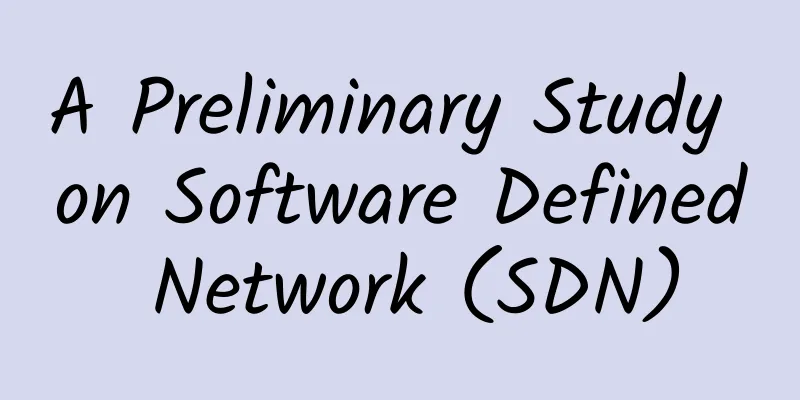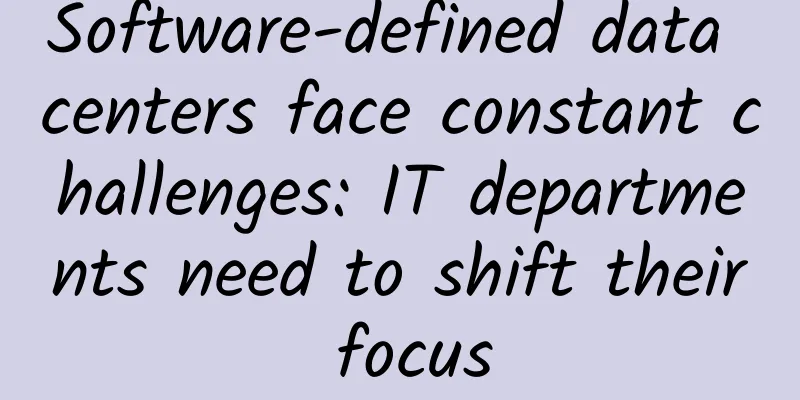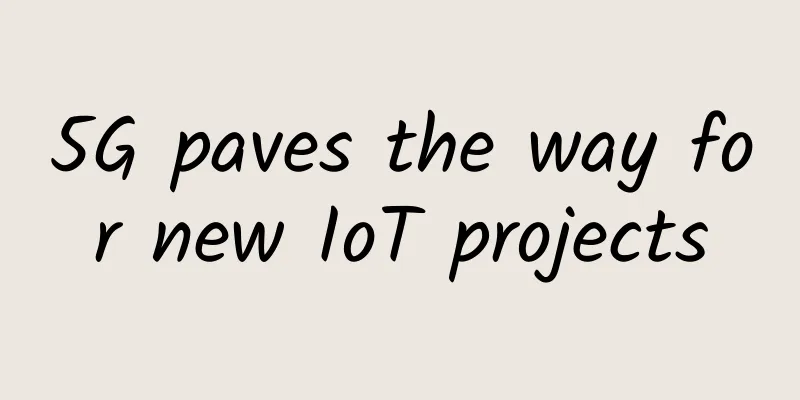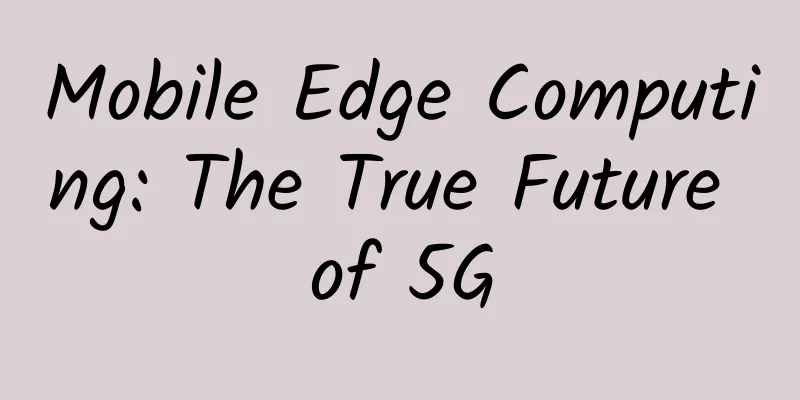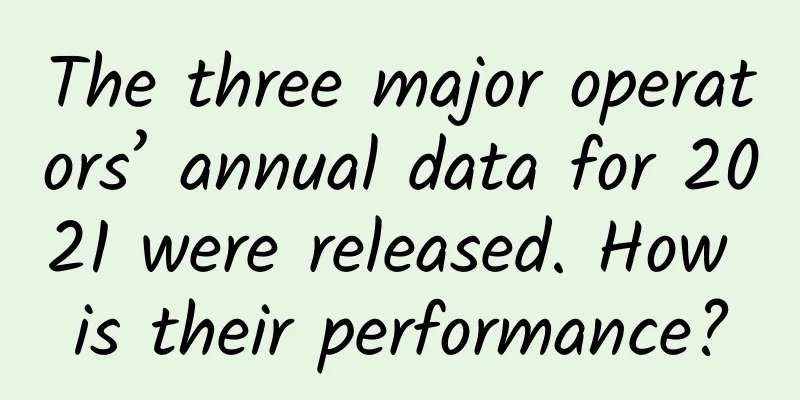Let’s talk about 6G development
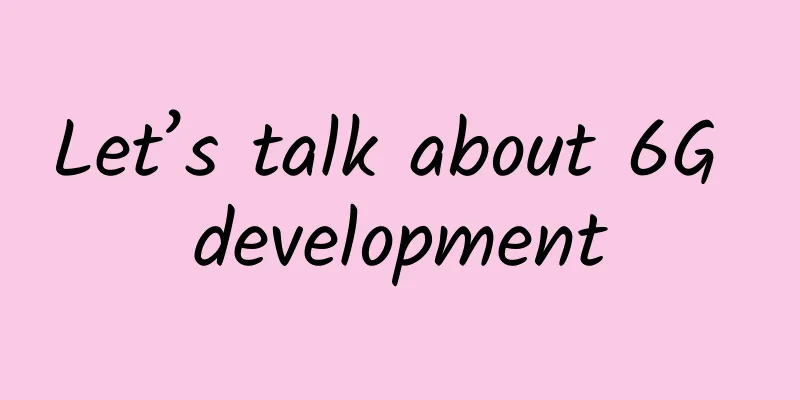
|
As of now, the fifth generation (5G) mobile communication system has been launched in many countries, and the number of 5G users has reached a very large scale. Now is the right time for academia and industry to turn their attention to the next generation. At this crossroads, an overview of the current state of technology and a look into the future of communications are undoubtedly of interest. This article mainly explores whether 6G is necessary under the premise that 5G is active in the field of mobile communications. Therefore, this article focuses on comparing and discussing the technical requirements of 5G and 6G, and summarizes the most advanced 6G research work and activities of some representative institutions and countries, predicts the relevant specifications and standardization roadmap when 6G is produced, and briefly predicts some possible technologies, and introduces their principles, advantages, challenges and open research issues. This article aims to explore how the birth of 6G will change people's daily lives, describe the full picture of all aspects of the 6G system as comprehensively as possible, and stimulate people's interest in the subsequent research and development of the 6G communication system. introductionThe mobile communication system is the first generation of analog cellular system, namely 1G network, which originated from the United States and Northern Europe. It has now developed to the fifth generation. The innovation of 2G lies in the global mobile communication system GSM; the innovation of 3G lies in the revolutionary technology of code division multiple access (CDMA), represented by WCDMA, CDMA2000 and TD-SCDMA; the innovation of 4G lies in the genius combination of multiple input multiple output (MIMO) and orthogonal frequency division multiplexing (OFDM). 5G will expand mobile communication services from people to things, from consumers to vertical industries, from traditional mobile broadband to Industry 4.0, virtual reality (VR), Internet of Things (IoT) and autonomous driving. While 5G is still being deployed around the world, academia and industry are already turning their attention to 6G systems to meet future information and communication needs by 2030. While some have resisted talk of 6G[1], several pioneering efforts on the next generation of wireless networks have already begun. In July 2018, the International Telecommunication Union Telecommunication (ITU-T) Standardization Sector established a focus group called “Network 2030 Technologies”. The group intends to study network capabilities for 2030 and beyond[2], which are expected to support new forward-looking scenarios such as holographic communications, ubiquitous intelligence, tactile Internet, multi-sensory experiences, and digital twins. The European Commission has initiated research activities beyond 5G, as called for in Horizon 2020—ICT-20 5G Long Term Evolution and ICT-52 Beyond 5G Smart Connectivity—and a number of pioneering research projects on key 6G technologies were launched in early 2020. The European Commission also announced a strategy to accelerate investment in Europe’s “gigabit connectivity” (including 5G and 6G) to shape Europe’s digital future[3]. In October 2020, the Next Generation Mobile Networks (NGMN) launched a new “6G Vision and Drivers” project to provide early and timely guidance for global 6G activities. Other traditional major players in the mobile communications field, such as the United States, China, Germany, Japan, and South Korea, have officially launched 6G research. Key drivers for developing 6GSince mid-2019, commercial 5G mobile networks have been rolled out around the world and have reached a very large scale in some countries. For example, by the end of 2020, China had deployed more than 500,000 5G base stations, serving more than 100 million 5G users. In line with the tradition of a new generation every decade, it is time for academia and industry to start exploring the successor to 5G. However, on the road to 6G, the first question we encounter is "Is 6G really needed?", or "Does 5G meet the needs?", so this article discusses the key drivers for the development of 6G. The development of next generation systems is driven not only by the exponential growth of mobile traffic and mobile subscriptions, but also by the new disruptive services and applications that are about to emerge. In addition, it is also driven by the inherent need of the mobile communication society to continuously improve network efficiency (i.e. cost efficiency, energy efficiency, spectrum efficiency and operational efficiency). With the emergence of advanced technologies such as AI, THz and large-scale satellite constellations, communication networks are able to evolve towards more powerful and efficient systems to better meet the needs of current services and open up the possibility of providing disruptive services that have never been seen so far. One of the key drivers is the explosive growth of mobile traffic. We are in an unprecedented era, with a large number of smart products, interactive services, and smart applications emerging and developing rapidly, placing huge demands on mobile communications. It is foreseeable that 5G systems will have difficulty adapting to the huge mobile traffic volume in 2030 and beyond. Due to the surge in new technology applications such as rich video applications, enhanced screen resolution, machine-to-machine (M2M) communications, and mobile cloud services, global mobile traffic will continue to grow in an explosive manner, reaching 5016 EB per month in 2030, compared to 62 EB per month in 2020. A report by Ericsson [4] shows that global mobile traffic reached 33 EB per month at the end of 2019, which proves the correctness of the ITU-R estimate. Over the past decade, the number of smartphones and tablets has grown exponentially due to the popularity of mobile broadband (MBB). This trend will continue in the 2020s as the penetration of smartphones and tablets has not yet reached saturation, especially in developing countries. At the same time, new user terminals such as wearable electronic devices and VR glasses have rapidly appeared on the market and have been rapidly adopted by consumers. On the other hand, as the number of MBB users increases, the traffic demand per MBB user continues to increase. This is mainly due to the popularity of mobile video services such as Youtube, Netflix, and more recently Tik Tok, as well as the steady improvement in screen resolution of mobile devices. Two-thirds of the upcoming explosive growth in mobile traffic[4] will come from mobile video services, and mobile video services will become more dominant in the future. In some developed countries, rich video services will drive strong traffic growth before 2025, and the long-term growth wave will continue due to the penetration of augmented reality (AR) and VR applications. Another key driver is potential application cases. With the emergence of new technologies and the continuous development of existing technologies, such as holography, robotics, microelectronics, optoelectronics, artificial intelligence, and space technology, many unprecedented applications can be cultivated in mobile networks. In order to emphasize the unique characteristics of 6G and define the technical requirements of 6G, some potential application cases of 6G are listed, such as holographic communication (HTC), multi-sensory experience, and mass intelligence. Holographic Communication (HTC): Compared to traditional 3D videos that use binocular parallax, true holograms can satisfy all the visual cues of observing 3D objects with the naked eye as naturally as possible. With the significant progress in holographic display technology in recent years, such as Microsoft's HoloLens[5], its application is expected to become a reality in the next decade. Remote rendering of high-definition holograms over mobile networks will bring a truly immersive experience. For example, holographic telepresence will allow remote participants to be projected into a conference room in the form of holograms, or allow participants in online training or education to interact with hyper-realistic objects. However, even with image compression, HTC will result in huge bandwidth requirements in the order of terabits per second. In addition to considering frame rate, resolution, and color depth in two-dimensional (2D) video, the quality of a hologram also includes volumetric data such as tilt, angle, and position [6]. HTC also requires ultra-low latency for true immersion and high-precision synchronization across a large number of related streams to reconstruct the hologram. Multi-sensory experience: Humans have five senses (vision, hearing, touch, smell, and taste) to perceive the external environment, while current communications focus only on optical (text, images, and video) and acoustic (audio, voice, and music) media. The involvement of taste and smell can create a fully immersive experience, which may bring about some new services, for example in the food and texture industries [2]. In addition, the application of tactile communication will play a more important role and bring about a wide range of applications, such as remote surgery, remote control, and immersive gaming. This use case places strict requirements on low latency. Pervasive intelligence: With the popularization of mobile smart devices and the emergence of new connected devices such as robots, smart cars, drones, and VR glasses, aerial intelligent services are expected to flourish. These intelligent tasks mainly rely on traditional computation-oriented AI technologies: computer vision, simultaneous localization and mapping (SLAM), face and voice recognition, natural language processing, motion control, etc. To overcome the strict computation, storage, power, and privacy limitations on mobile devices, 6G networks will provide pervasive intelligence in the form of AI as a service by leveraging distributed computing resources on the cloud, mobile edge, and end devices, and cultivating ML training and interference mechanisms for efficient communication [7]. For example, humanoid robots such as Boston Dynamics' Atlas [8] can offload the computational load of SLAM to edge computing resources to improve motion accuracy, extend battery life, and become lighter by removing some embedded computing components. In addition to computationally intensive tasks, pervasive intelligence also facilitates time-sensitive AI tasks to avoid the latency limitations of cloud computing when rapid decisions or responses to conditions are required. 6G Technical RequirementsIn order to well support the disruptive use cases and applications in 2030 and beyond, 6G systems will provide extremely high capacity, reliability, efficiency, etc. As with the minimum requirements for IMT-2020 specified in [9], a large number of quantitative or qualitative KPIs are used to indicate the technical requirements for 6G. Most of the KPIs used to evaluate 5G are still applicable to 6G, while some new KPIs will be introduced to evaluate new technical features. The following 5 KPIs can be considered as key requirements in the 5G definition and are briefly introduced as follows: Peak data rate: Driven by user demand and technological advances such as THz communications, it is expected to reach 1Tbps, which is dozens of times higher than 5G, which has a peak rate of 20 Gbps for downlink and 10 Gbps for uplink. User Experienced Data Rate: This value is defined as the 5th percentile (5%) of the cumulative distribution function of user throughput. In other words, users can get at least 95% of the data rate at any time or location. It is more meaningful to measure perceived performance, especially at the cell edge, and reflect the quality of network design (such as site density, architecture, inter-cell optimization, etc.). In the 5G deployment scenario in dense cities, the user perceived rate targets are 100Mbps for downlink and 50Mbps for uplink. 6G is expected to provide a higher 1Gbps, 10 times that of 5G. Latency: Latency can be divided into user plane and control plane latency. The former is the time delay from sending a packet at the source to receiving it at the destination in a wireless network, assuming the mobile station is active. In 5G, the minimum requirement for user plane latency is 4ms for eMBB and 1ms for URLLC. This value is expected to be further reduced to 100µs or even 10µs. Control plane latency refers to the transition time from the most "battery efficient" state (e.g., idle state) to the start of continuous data transmission (e.g., active state). The minimum latency of the control plane in 5G should be 10ms, and it is expected to improve significantly in 6G as well. In addition to air latency, round-trip or E2E latency is more meaningful, but it is also complex due to the large number of network entities involved. In 6G, E2E latency can be considered as a whole. Mobility: Mobility means the maximum speed of a mobile station supported by the network while providing acceptable quality of experience (QoE). To support high-speed train deployment scenarios, 5G supports a maximum mobility of 500 km/h. In 6G, if commercial aviation systems are considered, the maximum speed is 1000 km/h. Connection density is a KPI used for evaluation in mMTC use cases. With a limited number of radio resources, the minimum number of devices with relaxed QoS per square kilometer is 106 5G, which is expected to increase further by 10 times to 107 per square kilometer. Visible Light CommunicationVLC operates in the frequency range of 400THz to 800THz. Unlike RF technologies in the lower THz range that use antennas, VLC relies on illumination sources, especially light-emitting diodes (LEDs), and image sensors or photodiode arrays to implement transceivers. Using these transceivers, high bandwidth can be easily achieved with low power consumption (100 mW at 10 Mbps to 100 Mbps) without electromagnetic or radio interference. The high energy efficiency, long life (up to 10 years), and low cost of mainstream LEDs, coupled with unlicensed spectrum access, make VLC an attractive solution for use cases that are sensitive to battery life and access costs, such as massive IoT and wireless sensor networks (WSNs). In addition, VLC also shows better propagation performance than RF technologies in some non-terrestrial scenarios, such as aerospace and underwater, which may be an important component of the future 6G ecosystem. Compared to RF, the MIMO gain in VLC is very fragile, especially in indoor scenarios. This stems from the high coherence between propagation paths, i.e., low spatial diversity. Although this coherence can be reduced to some extent by using arrays of spaced LEDs [10], MIMO-VLC is also challenged by receiver design and implementation: non-imaging receivers are extremely sensitive to their spatial alignment with the transmitter, while imaging receivers are not suitable for cost-critical use cases due to their high price. Therefore, despite academic efforts since a decade [11], no MIMO approach has been standardized as the mainstream VLC physical layer of IEEE 802.15.7 so far. Therefore, beamforming in VLC, unlike MIMO-based RF beamforming, is achieved through special optical devices called spatial light modulators (SLMs). Similar to mmWave and terahertz technologies, VLC also relies on LOS channels because it has neither the ability to penetrate nor enough diffraction to bypass common obstacles. At the same time, due to concerns about interference from adjacent cells and almost ubiquitous ambient light noise, VLC systems usually require directional antennas with narrow beams. These facts make VLC systems highly sensitive to the location and mobility of users, resulting in high requirements for beam tracking. On the other hand, this feature can also bring advantages in certain usage scenarios, such as higher accuracy of indoor positioning[12] and lower interference in vehicle communications[13]. Another key technical challenge facing VLC is the open and unregulated (more specifically, unregulatable) access to the visible light spectrum, which means that VLC systems pose a higher security risk and require stricter security requirements than traditional cellular systems in licensed RF bands. In this regard, physical layer security has been widely studied as a promising solution [14]. Summary and OutlookThis paper provides a partial survey of the drivers, requirements, motivations, and enablers of 6G mobile systems. It can be concluded that the traditional evolution of a new generation every decade will not end with 5G, and considering the great enthusiasm of academia and industry for the development of 6G, the first 6G network is expected to be deployed in 2030 or earlier. 6G will accommodate the use cases and applications introduced in 5G, such as the Internet of Things, Industry 4.0, Virtual Reality, and Autonomous Driving, in a more cost-effective, energy-efficient, and resource-efficient manner, and provide better quality of experience. At the same time, it will enable unprecedented use cases that 5G cannot support, such as holographic communications, pervasive intelligence, global ubiquitous connectivity, and other disruptive applications that we cannot yet imagine. The trend of mobile communication services expanding from being only human-centric to connecting machines and things, which began with the introduction of MTC and IoT in the 5G era, will continue, and the Internet of Everything will be realized when 6G arrives. 6G systems must meet extremely stringent requirements for latency, reliability, mobility, and security, and significantly improve coverage, peak data rate, user experience rate, system capacity, and connection density. Compared with 5G, KPIs are typically increased by 10 to 100 times. In 1926, engineer and inventor Nikola Tesla said that “when wireless technology is perfected, the entire earth will become a huge brain.” When 6G arrives, this prediction will become a reality. References[1] FH P . Fitzek and P . Seeling, “Why we should not talk about 6G,” arXiv, Mar. 2020 [2] “A blueprint of technology, applications and market drivers towards the year 2030 and beyond,” White Paper, ITU-T FG-NET-2030, May 2019 [3] "Shaping Europe's digital future," Communication-COM(2020)67, European Commission, Brussels, Belgium, Feb. 2020. [4] “Mobile data traffic outlook,” Report, Ericsson, Jun. 2020. [5] Microsoft HoloLens. [Online]. Available: https://www.microsoft.com/en-us/hololens/ [6] A. Clemm et al., “Toward truly immersive holographic-type communication: Challenges and solutions,” IEEE Commun. Mag., vol. 58, no. 1, pp. 93–99, Jan. 2020. [7] KB Letaief et al., “The roadmap to 6G: AI empowered wireless networks,” IEEE Commun. Mag., vol. 57, no. 8, pp. 84–90, Aug. 2019 [8] Boston dynamics. [Online]. Available: https://www.bostondynamics.com/atlas [9] Minimum requirements related to technical performance for IMT-2020 radio interface(s), ITU-R Std. M.2410-0, Nov. 2017. [10] A. Al-Kinani et al., “Optical wireless communication channel measurements and models,” IEEE Commun. Surveys Tuts., vol. 20, no. 3, pp. 1939–1962, 2018 [11] N. Huang et al., “Transceiver design for MIMO VLC systems with integerforcing receivers,” IEEE J. Sel. Areas Commun., vol. 36, no. 1, pp. 66–77, 2018 [12] Y. Zhuang et al., “A survey of positioning systems using visible LED lights,” IEEE Commun. Surveys Tuts., vol. 20, no. 3, pp. 1963–1988, 2018. [13] A. Memedi and F. Dressler, “V ehicular visible light communications: A survey,” IEEE Commun. Surveys Tuts., pp. 1–1, 2020. [14] MA Arfaoui et al., "Physical layer security for visible light communication systems: A survey," IEEE Commun. Surveys Tuts., vol. 22, no. 3, pp. 1887–1908, 2020. Translated and modified from: W. Jiang, B. Han, MA Habibi and HD Schotten, "The Road Towards 6G: A Comprehensive Survey" |
<<: How does DNS affect your surfing speed?
>>: What else will we look forward to in the communications industry in 2023?
Recommend
What is Intelligent Edge Computing?
You’ve heard of edge computing. You may have even...
The evolution of the Internet, the inevitability of blockchain
In the article "Bitcoin Prequel", it is...
IBM releases 'quantum-safe' tool with end-to-end encryption to protect against quantum computing attacks
On May 15 , IBM launched a set of tools called &q...
Why the development of optical communications is not as good as 5G, experts say: each is fighting for its own
At the 2021 China Optical Network Conference whic...
MWC19 Shanghai | Ruijie and the operator industry jointly create a 5G world
[[268489]] Mobile communications, starting with G...
How to use ip command to manage network in Linux
The most basic part of Linux administration and t...
What is the difference between Private 4G LTE and Private 5G?
Many enterprises are deploying private 4G LTE (sh...
The world's largest brain-like supercomputer is launched: it has millions of processor cores
[[248667]] Image: This UK supercomputer can opera...
Let's take a look at what new tricks Huawei has come up with during its ICT Ecosystem Tour in China!
[51CTO.com original article] At the Huawei China ...
[6.18] CMIVPS recharge gift 20%, Hong Kong high bandwidth VPS monthly payment 20% off / annual payment 30% off
CMIVPS has launched a special promotion for 6.18....
Why is CDN designed this way?
Over the past few decades, computer networks have...
5G and machine learning: Transforming cell towers from smart to genius
[[335632]] 5G ushers in new “genius” networks to ...
Bubble or opportunity? 2016 Enterprise IT Market Innovative Technology Application Survey Report
The four major innovative technologies of Interne...
JustVPS 20% off: $3.52/month KVM-1GB/20GB/300M unlimited traffic/21 data centers available
JustVPS.pro is BFB ONE FZ-LLC registered in the U...


